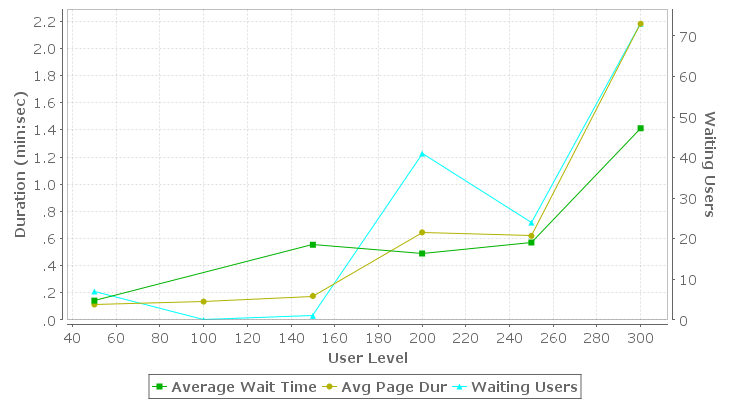| Load Test Report |  |
| 50 + 50 up to 300 |
Executive Summary
User Capacity
The User Capacity Analysis calculates how many users the application can support based on the configured performance goals. See the User Capacity section for a more detailed analysis.
| Estimated User Capacity | at least 100 |
| less than 150 | |
| Maximum Users Analyzed | 300 |
Performance Goals
| 50 Users |
 All goals passed All goals passed
|
| 100 Users |
 All goals passed All goals passed
|
| 150 Users |
 1 goal failed 1 goal failed
|
| 200 Users |
 1 goal failed 1 goal failed
|
| 250 Users |
 1 goal failed 1 goal failed
|
| 300 Users |
 6 goals failed 6 goals failed
|
Slowest Pages
The chart belows show the slowest pages, as determined by the page durations measured during the test. See the Slowest Pages section for a more detailed analysis.
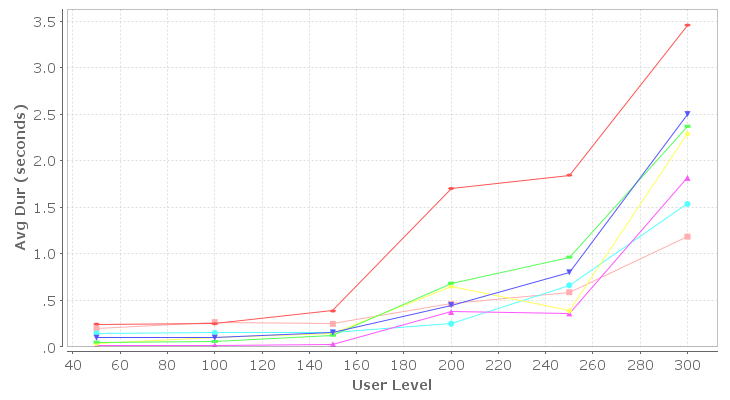
Top-level Metrics
Page Duration
The Page Duration chart shows the minimum, maximum and average page duration for all pages in the test that completed during the sample periods summarized for each user level. Note that the page duration includes the time required to retrieve all resources for the page from the server. It includes network transmission time but not browser rendering time. In a well-performing system, the page durations should remain below the required limits up to or beyond the required load (number of users), subject to the performance requirements set forth for the system.
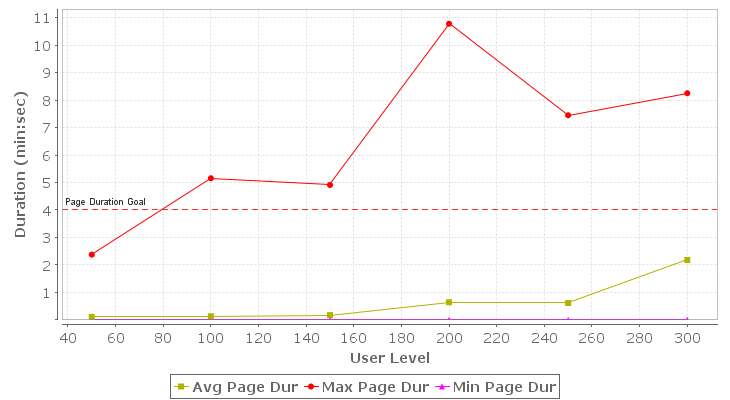
Page Completion Rate
The Page Completion Rate chart shows the total number of pages completed per second during the sample periods summarized for each user level. In a well-performing system, this number should scale linearly with the applied load (number of users).
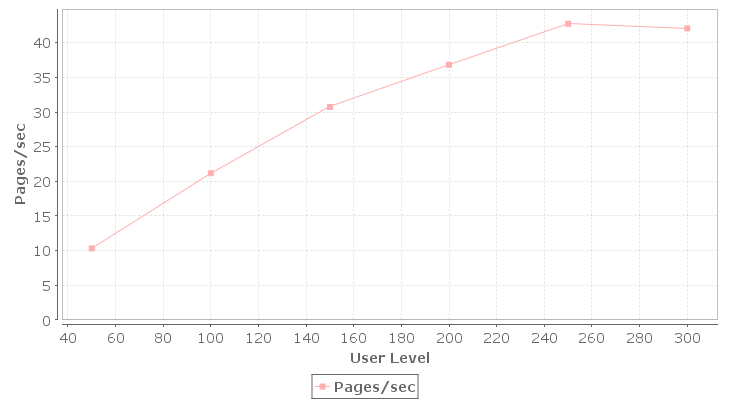
Bandwidth Consumption
The Bandwidth chart shows the total bandwidth consumed by traffic generated directly by the load test engines during the sample periods summarized for each user level. In a system that is not constrained by bandwidth, this number should scale linearly with the applied load (number of users). Note that other sources of bandwidth may be active during a test and may even be caused indirectly by the load test but may not be included in this metric. If the Advanced Server Analysis module was used to collect server metrics, refer to the Servers section of the report for more detailed data. The bandwidth consumption is described in terms of the servers; i.e. outgoing bandwidth refers to data sent by the server to the browser.
Learn more about the diagnosing bandwidth limitations by watching the Bandwidth screencast
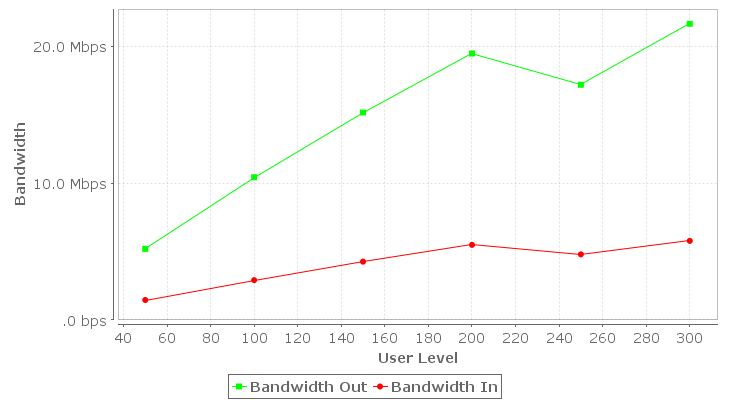
Failures
The failures section chart illustrates how the total number of page failures and the page failure rate changed throughout the test relative to the sample periods summarized for each user level. A page can fail for any number of reasons, including failures in the network and servers (web, application or database). See the Failures section of the report for details on the page failures encountered. In a well-performing system, this number should be zero.
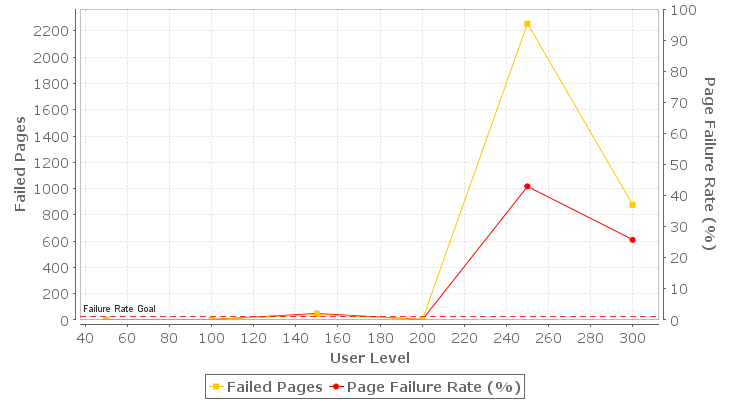
Waiting Users
The Waiting Users and Average Wait Time metrics help diagnose certain types of performance problems. For example, they can help determine what pages users have stopped on when a server becomes non-responsive. The 'Waiting Users' metric counts the number of users waiting to complete a web page at the end of the sample periods summarized for each user level. The 'Average Wait Time' describes the amount of time, on average, that each of those users has been waiting to complete the page.
Learn more about the Waiting User metrics by watching the Waiting Users screencast
